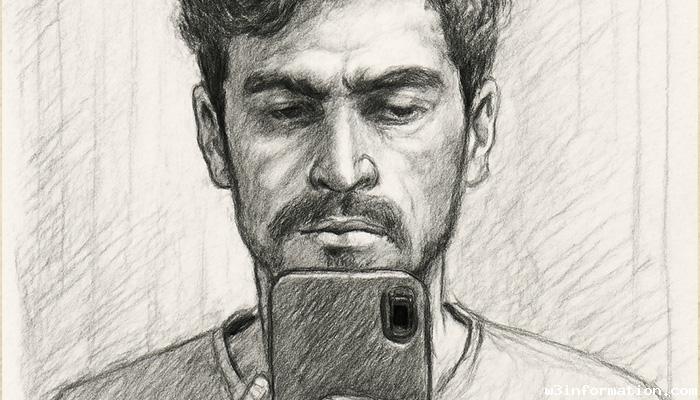Mobile Photography Tips and Tricks
The swift progress of smartphone camera technology enables nearly everyone to access a high-performance camera through their phones. Capturing outstanding images requires more than just pressing the camera button. This blog presents actionable mobile photography techniques that enable you to capture professional-grade images for both personal enjoyment and commercial purposes.
- 1. Understand Your Camera Capabilities
- 2. Master Lighting for Better Shots
- 3. Control Focus and Exposure
- 4. Nail Your Composition
- 5. Keep It Steady
- 6. Edit for Enhancement, Not Overkill
- 7. Add Depth with Accessories
- 8. Use HDR and Night Mode Wisely
- 9. Experiment with Different Styles
- 10. Practice Regularly
- Conclusion
- More Related Topics
1. Understand Your Camera Capabilities
Explore Manual/Pro Mode
Most contemporary smartphone devices come equipped with Pro or Manual control modes. This gives you control over:
ISO: Adjusts light sensitivity. Select a lower ISO setting for bright environments and increase your ISO when shooting in low light conditions.
Shutter Speed: Low-light photography benefits from slower speeds but demands stability; faster speeds capture motion by freezing it.
White Balance: Controls the colour temperature to match the environmental lighting conditions.
Focus: To achieve creative control you should toggle between automatic and manual focus modes.
Use the Gridlines
By enabling the grid feature you can apply the Rule of Thirds for better photo composition. The well-established photography principle guides photographers to position subjects away from the center to achieve more balanced and lively compositions.
2. Master Lighting for Better Shots
Shoot in Natural Light
Natural light is more flattering and dynamic. The period right after sunrise or before sunset known as Golden Hour delivers warm and gentle lighting which is ideal for both portrait and landscape photography.
Avoid Harsh Flash
Phone flashes can create overexposed, flat images. Instead:
Use ambient light from windows or lamps.
Reposition yourself strategically to utilize the existing light to its fullest potential.
Use Backlighting Creatively
Position your lighting source behind the subject to produce silhouette effects and dramatic halo visuals. Ensure proper exposure by tapping on your subject to balance the lighting.
3. Control Focus and Exposure
Tap to Focus
Set focus by tapping on your subject every time. As a result, your subject remains sharp which is particularly useful for portrait photography.
Use AE/AF Lock
Long-pressing the screen on most smartphones activates both auto exposure (AE) and auto focus (AF) locks which ensures that your frame maintains steady lighting conditions and sharpness.
4. Nail Your Composition
Leading Lines
Utilize roads and fences along with railings and walls to direct the viewer’s attention towards the subject. This adds depth and visual interest.
Symmetry and Reflections
Symmetry appeals to the eye. Create balanced compositions by photographing structures such as buildings and bridges along with their reflections on water surfaces and mirrors.
Frame Within a Frame
Doorways, arches and windows can serve as natural frames for your subject. The image gains an additional narrative dimension through this technique.
Fill the Frame
Move closer to your subject or utilize zoom functions to remove distracting elements. By focusing on detail it makes the subject more captivating and interesting to view.
5. Keep It Steady
Use Both Hands or a Tripod
A steady camera ensures sharper images. For better stability when taking photos use both hands to hold your phone or purchase a small tripod.
Use a Timer or Remote Shutter
Avoid camera shake by using:
- The timer function
- Volume button as shutter
- A Bluetooth remote for stability
6. Edit for Enhancement, Not Overkill
Choose the Right App
Snapseed: Snapseed provides free access for users while presenting advanced healing and selective adjustment capabilities in its easy-to-use interface.
Adobe Lightroom Mobile: Adobe Lightroom Mobile provides essential tools for detailed editing work such as tone curve adjustments and colour grading with preset options.
VSCO: Offers artistic filters and smooth tone adjustments.
Basic Editing Workflow
Modify exposure levels and contrast settings to enhance brightness and definition.
The recovery of detail is achieved by making adjustments to the highlights, shadows and the white and black tones.
Modify temperature and tint for colour balance.
Apply sharpness and structure effects minimally to maintain a natural appearance in your edits.
7. Add Depth with Accessories
Attach Lenses
Buy external clip-on lenses to increase your creative photography capabilities.
Macro lenses: Macro lenses are ideal for shooting close-up photos of small subjects such as flowers and insects.
Wide-angle lenses: Ideal for landscapes and group shots.
Fisheye lenses: Great for creating fun, distorted effects.
Gimbals and Stabilizers
These accessories minimize the wobble that occurs during video recording. A stabilizer produces professional-looking footage when used to capture smooth cinematic shots or time-lapse videos.
Portable Lights
Ring lights or portable LED lights deliver soft lighting that enhances portrait photography while avoiding the harsh effects of built-in flash illumination.
8. Use HDR and Night Mode Wisely
High Dynamic Range (HDR)
High Dynamic Range (HDR) enables better photos of scenes where bright and dark areas create significant contrast. The HDR feature combines different exposure levels to maintain detail across bright and dark areas which results in more evenly balanced photographs.
Night Mode
Most current mobile phones feature Night Mode technology which utilizes computational photography to illuminate dark environments while maintaining image details. Maintain a stable phone position while using Night Mode to achieve optimal results.
9. Experiment with Different Styles
Black and White Photography
Black and white photography delivers a classic and dramatic appearance to photos. Texture and lighting together with strong contrast elements will boost your photo's visual impact.
Silhouettes
Setting your subject against a light source enables the production of striking silhouettes. Maintain a low exposure level to preserve subject darkness and let background light penetrate the scene.
Motion Blur
To produce dynamic shots you should try using motion blur to emphasize movement. Motion blur photography works best for subjects such as moving cars and walking individuals as well as flowing bodies of water. To capture movement in your images use slower shutter speeds.
10. Practice Regularly
Shoot Often
Frequent practice in photography leads to improved knowledge about lighting techniques, compositional angles, and visual arrangement. To achieve perfection you must practice so challenge yourself by taking pictures of various subjects and environments.
Learn from Others
Study professional photographers by following their accounts on social media platforms and checking their profiles on photography websites. Imitate professional photographers' techniques to determine which methods suit you best.
Conclusion
Developing skills in mobile photography requires you to learn your phone's settings while practicing various shooting techniques and gaining a creative perspective of your surroundings. Through the utilization of natural light combined with careful composition and stabilization of shots and precise editing you can capture images that match professional camera quality. Proper tips and techniques will transform your smartphone into a valuable device for capturing beautiful images while improving your photography abilities.
 DIY Holiday Decor Ideas on a Budget
DIY Holiday Decor Ideas on a Budget
 How to Create a Healthy Meal Plan for the Week
How to Create a Healthy Meal Plan for the Week
 Discover your top 10 comforting meals to enjoy during the winter season
Discover your top 10 comforting meals to enjoy during the winter season
 Tips for Stress-Free Holiday Travel
Tips for Stress-Free Holiday Travel
 Mobile Video Editing Apps to Try
Mobile Video Editing Apps to Try
 Mobile Health Apps: Best of 2025
Mobile Health Apps: Best of 2025